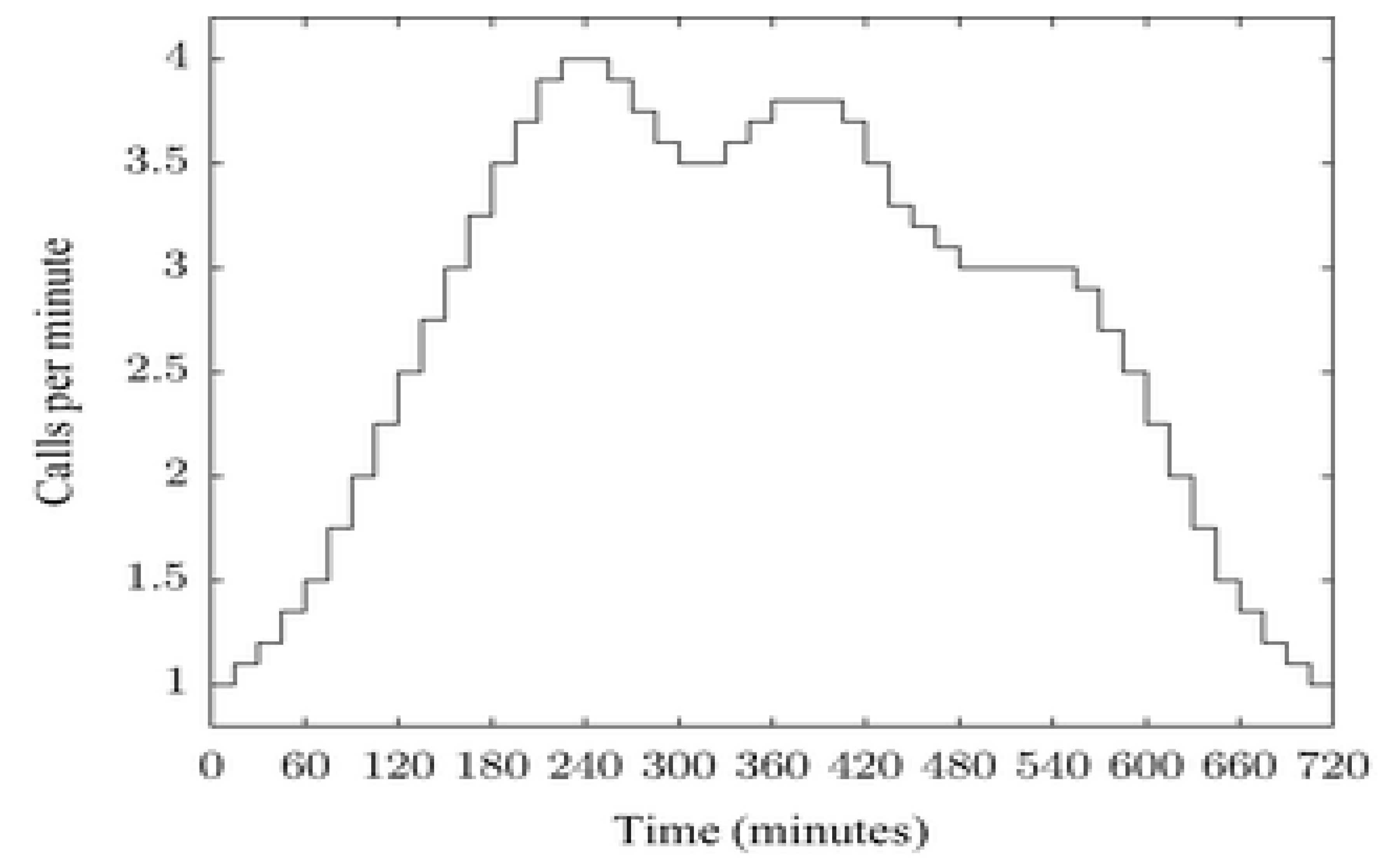3. Solving the non-stationary queueing system’s PSFFA (c,f., (1))
Theorem 3.1. Ismail’s ration,
solves (2.1), with a closed form expression to read as:
We have
, (c.f., (1))
This translates to
, (2)
Let , then . Thus, we have
(3)
Define
(4)
Hence, it is implied that:
(5)
(6)
which implies
(7)
which yields
(8)
Therefore, we have
(9)
(10)
, (11)
This finally solves the complicated mathematical computations to
This transforms to the final required closed form solution:
By mathematical analysis, it is well known that
(we are allowed to assign
Thus, one gets
where
,,
,
As required.
If = 0, the derived solution reduces to the closed form solution of Time Varying queueing system.
Numerical experiment
(c.f., Theorem(3.1))
Let M/G/1 queueuing system . Hence, .2886751346,a =2.834830673, b = -6.298932288
Hence,
It is observed analytically that the assigned time increasing mean service rate,
for sufficiently large number in the time varying
queueing system, time will be increasing ultimately to approach infinity. This can be seen by
Figure 2,
Figure 3 and
Figure 4.
Mathematically speaking, we have
= =










